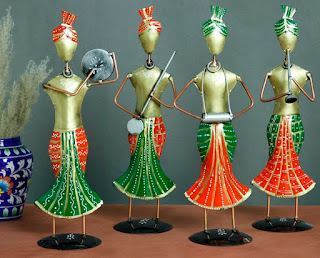Jaipur Blue Pottery: The Art
How would you feel if the bowl holding your soup is not environmentally sustainable? What if it contains lead and cadmium?
When we turn to our basics, we find that the ancient humans much relied on locally available raw materials for pottery and harvested vegetable dyes to paint their utensils. Much of this history reminds us of the famous Blue Art Pottery originated in Persia in the 15th century and slowly flourished in the middle east and Iran. Unlike the traditional clay pottery, the Blue Art pottery utilizes Quartz powder, fuller's earth (Multani Mitti), katira gond and water to form a thick paste like material which is then touched up on the Potters wheel to reflect the craftsman ideas. Once the product is shaped up, it is kept in direct sun light for a few days before the craftsman find it fit to move further up in the process. Blue Pottery Art
 |
BLUE POTTERY WALL PLATE |
The penultimate process involves keeping the unripe product in fire klins for a few days so that the final product is much hardened and can be used for varied purposes (strengthened). What is left is the outer paint which is done using the natural colors obtained from the vegetables, fruits and flowers.
Once cleaned and brushed up, these are the most amazing darlings in your home!Blue Pottery Art

Comments